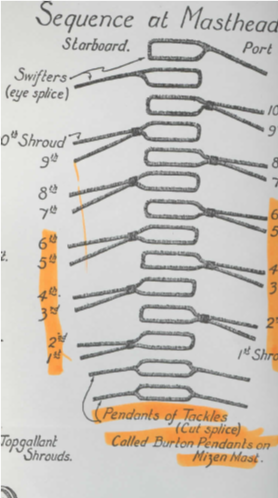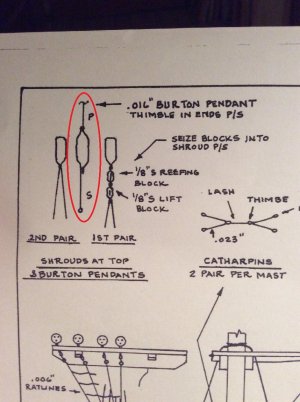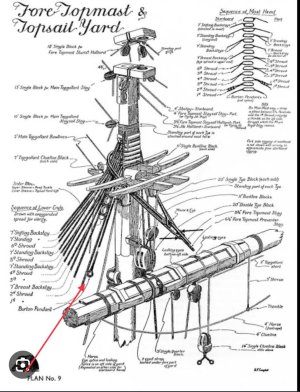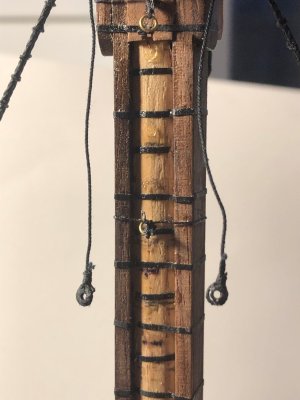This photo of the shroud sequence:

...is from Longridge, Plan #9, between pages 228 and 229. Has anyone had experience constructing the shroud shown at the bottom, the Burton pendants, which go on the mast first? This seems it should be a "throat" seizing (Longridge, page 217, fig. 149) to put the port and starboard shroud together. Tension would have to be taken up at the and between the two dead eyes but would not be on the mast as with the other shrouds.Any suggestions for a good way to make this. One could make a loop in one end of two 0.4mm strings, then cutting the loops open and "reassemble" them using two simulated long splices. I am going to try that unless I come up with something better. At this scale, it might not really matter but I'ld like to make it as realistic as possible.
Any suggestions would be appreciated and most helpful.

...is from Longridge, Plan #9, between pages 228 and 229. Has anyone had experience constructing the shroud shown at the bottom, the Burton pendants, which go on the mast first? This seems it should be a "throat" seizing (Longridge, page 217, fig. 149) to put the port and starboard shroud together. Tension would have to be taken up at the and between the two dead eyes but would not be on the mast as with the other shrouds.Any suggestions for a good way to make this. One could make a loop in one end of two 0.4mm strings, then cutting the loops open and "reassemble" them using two simulated long splices. I am going to try that unless I come up with something better. At this scale, it might not really matter but I'ld like to make it as realistic as possible.
Any suggestions would be appreciated and most helpful.










